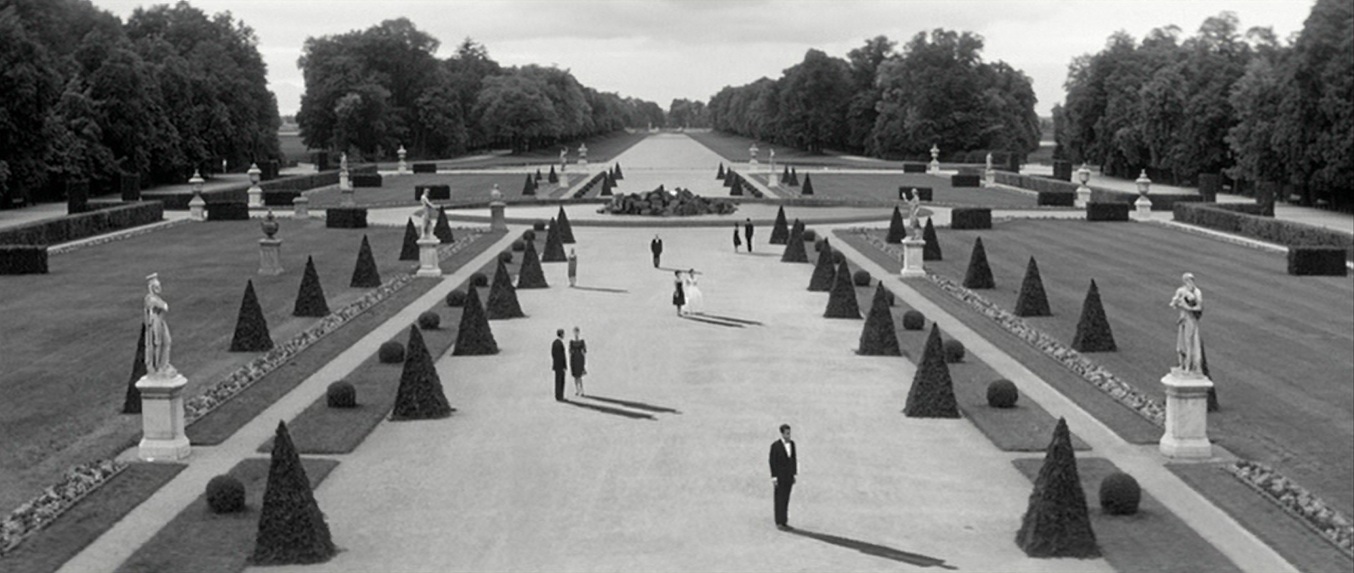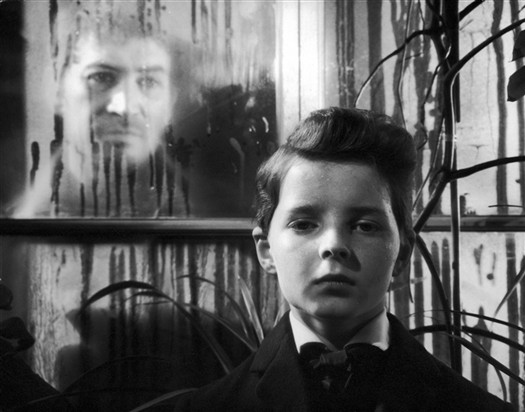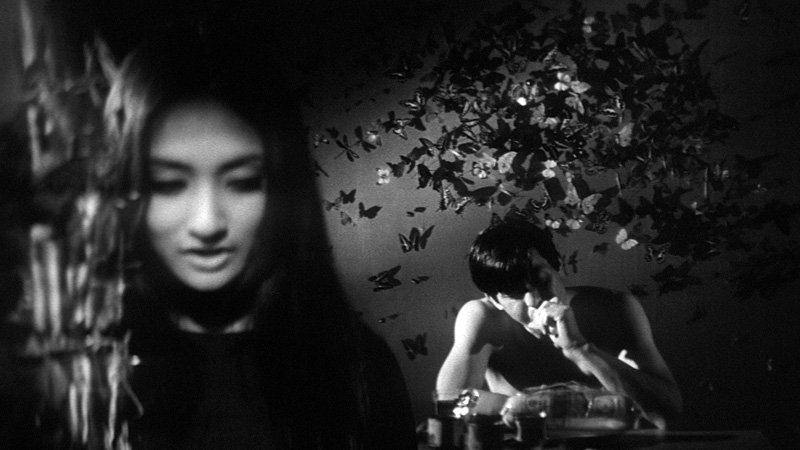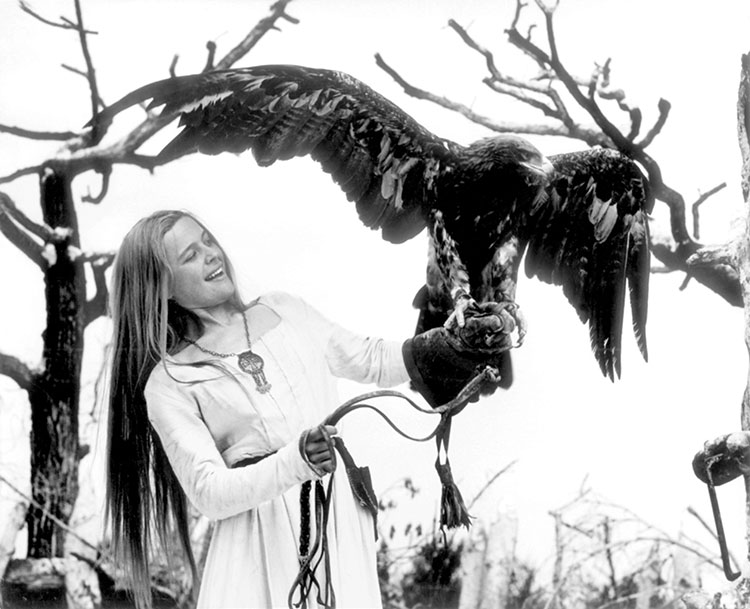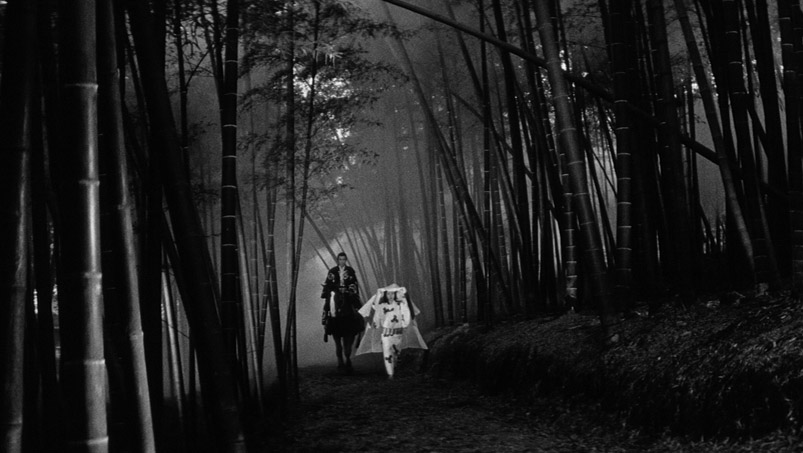14. Last Year at Marienbad (1961)
D: Alain Resnais/C: Sacha Vierny
A man desperately tries to convince a woman that they had an affair a year ago at the baroque hotel where they are conversing.
As the most opaque and indeterminate film on the list, Last Year at Mariendbad is enigmatic in substance, and a luxurious labyrinth in style. Last Year at Mariendbad, filled with empty rooms and moments of eerie silence, is full of variations on recurring images such as the hotel and surrounding garden. These variations result in a disorienting and non-linear narration. To further convolute matters, the narration does not always correlate to the images on screen.
15. The Innocents (1961)
D: Jack Clayton/C: Freddie Francis
Miss Giddens is hired as governess to look after two orphaned children whose Uncle has no time for them. When she arrives at the estate, strange things begin to occur throughout the Victorian mansion. Miss Giddens starts to see apparitions of past employees of the estate, and she fails to convince the children that they are haunting the manor. Are they real or is she descending into madness?
With a screenplay mostly written by Truman Capote, The Innocents is filled with a Gothic sensibility in both style and substance. The magic of The Innocents lies in whether or not the ghosts that Miss Giddens encounter are actually real. The real and imaginary create an interplay that makes it practically impossible to determine whether or not the ghosts Miss Giddens sees are present or figments of her imagination. With the exception of two brief scenes, we see the apparitions with Miss Giddens.
This creates an ambiguity in which we are forced to be more active participants of the events unfolding before us. There are wonderful touches of imagery throughout the film: the spider eating a butterfly, the increasingly dark dresses that Miss Giddens wears, and the woman in black.
16. Ivan’s Childhood (1962)
D: Andrei Tarkovsky/C: Vadim Yusov
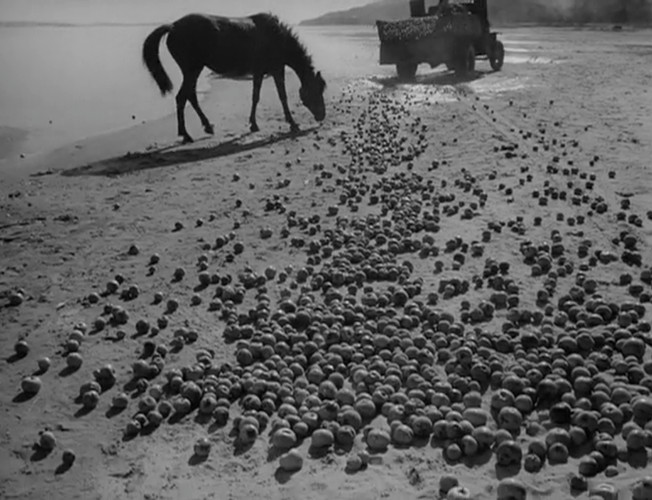
A twelve year old navigates as a spy for the Soviet Army during WWII. Ivan seeks retribution for the murder of his parents.
Ivan’s Childhood is a story about one child’s loss of innocence in an unforgiving world where killing is the order of the day. And within this world, Tarkovsky and Yusov offer transcendent images that both accentuate, and violently juxtapose, the horrors of war. The birch forest offers a reprieve from the battlefield, while other images, such as Ivan being framed by the jagged timber of a decapitated building, instill the dreadfulness of Ivan’s reality.
17. Repulsion (1965)
D: Roman Polanski/ C: Gilbert Taylor
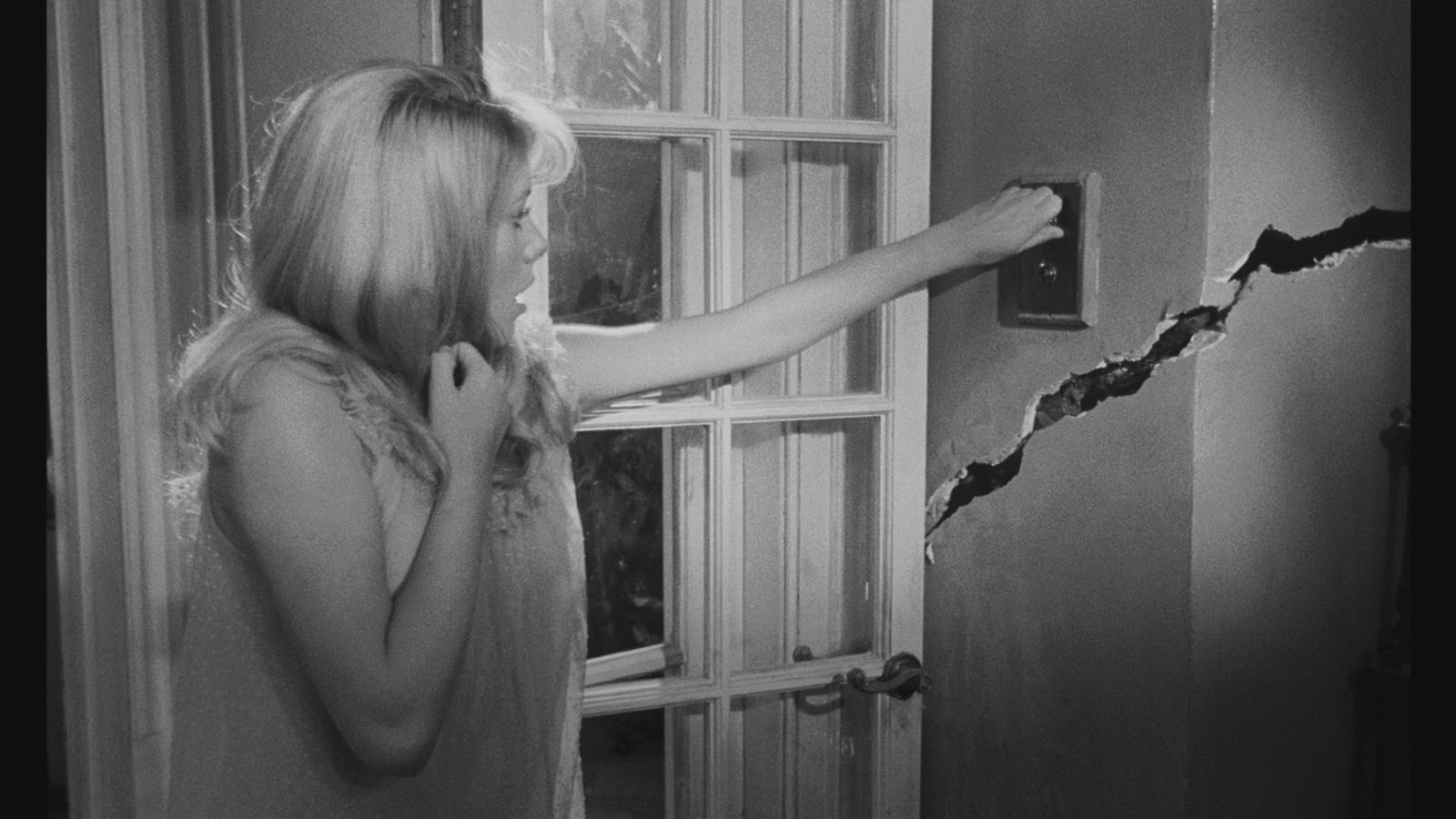
Carol Ledoux, a socially awkward woman who battles with a severe mental illness, is left alone to her own mental deterioration after being sent home from work. A beautiful woman slowly descends into madness.
Perhaps heavier on the hauntingly and less on the beautiful, Repulsion is a slow burner that builds tension through the increasingly nightmarish imagery as Carol Ledoux gradually loses her grip on reality. The juxtaposition in ‘Repulsion’ is evidenced in the sharp contrast of Carol’s natural beauty and the increasingly grotesque delusions of her rapidly deteriorating mind.
The vast majority of the film takes place in the apartment she shares with her sister and brother in law. Polanski masterly transforms the apartment with nightmarish images such as the hands and arms that come out of the hallway, a man sexually assaulting her, and menacing cracks that continually form on the walls in her bedroom.
18. Branded To Kill (1967)
D: Seijun Suzuki/C: Kazue Nagatsuka
A yahuza Boss orders a hit-man to kill four people. Although the first three hits prove successful, Hanada, the hitman, botches the fourth hit and the hunter becomes the hunted as Hanada is ordered to be killed by the yahuza boss. Along the way, Hanada is double-crossed by his wife, deflects a bullet with both a belt buckle and headband, and has a truce with the Boss, number one, which involves living together arm in arm.
Branded to Kill is one of the kookiest, light-hearted films on this list. The story itself is probably the least interesting element of Branded To Kill, but that doesn’t really matter as scene after scene is filled with fresh ideas that span noir, pop art, and surrealism.
Unfortunately, the Kikkatsu company were less impressed and subsequently fired Suzuki following Branded to Kill due to its experimental aesthetic. Fortunately the film has survived and its playful experimentation juxtaposed with the brooding shadows of noir makes for a refreshing viewing experience.
19. Marketa Lazarova (1967)
D: Frantisek Vlacil/C: Bedrich Batka
Two local clans battle one another as religions clash, Christianity and Paganism, during the Middle Ages in Czechoslovokia. The title character of the film, Marketa Lazarova, is kidnapped by the opposing Pagan clan and claimed by the leader’s son.
With an art house sensibility over the more traditional visual narratives of historic epics, Marketa Lazarova offers a more meditative aesthetic with a greater emphasis on the landscape and shots of specific images that are more subjective in their function. The stark wintry landscape juxtaposes the savage nature of war between the aforementioned groups as the film depicts the violent nature of religious paradigm shifts during the Middle Ages.
20. Kuroneko (1968)
D: Kaneto Shindo /C: Norimichi Igara & Kiyomi Kuroda
A woman and daughter are raped by a group of samurai during the upheavel of the Sengoku period. A revenge story with a twist, the two women return as ghosts who seek retribution by means of murder on all samurai who cross a particular part of a bamboo forest.
Kuroneko drips with atmosphere from the moment when the mother and daughter begin haunting the forest in search of samurai. With drastic chiaroscuro from cinematographers Igara and Kuroda, the ghosts walk, float, and fly across the eeriness of a bamboo forest and fortress. Although the story is fairly simplistic with an intriguing plot twist halfway through the film, the imagery is so rich that it takes little time to fall under its dark spell.
Author Bio: Brett Lamminen is a counselor, poet, aesthete, and currently working on his Ph.D. in Humanities at Salve Regina University. He resides on Cape Cod with his wife and daughter.
